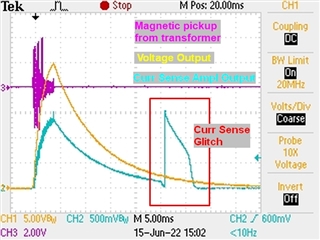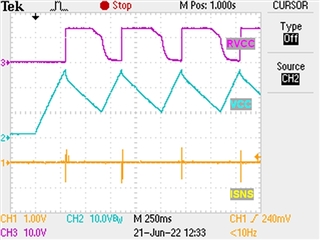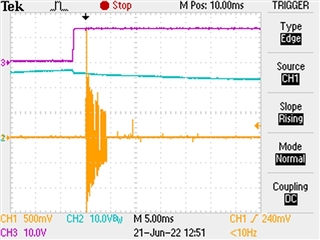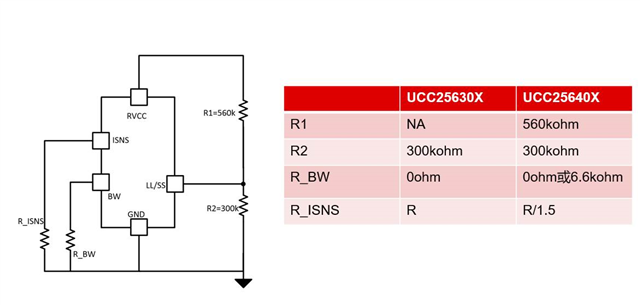Part Number: TIDA-010038
Dear Support,
We are trying to implement the TIDA-010038 reference design with some modifications; the main one is having a temperature dependent output voltage. The voltage range required is 26.5V to 29.5V (temperature optimized battery charger). Unfortunately we have some stability issues. The stability issues come in effect when starting up close to the top of our voltage range (>28.4V without load and >27.4 with 4A load). The system also falls into instability (after a successful startup) when the output voltage reaches approx. 29V, with or without load.
So far we have experimented (with no success) with the following:
- we have deactivated the constant current functionality (R30 open and U6B.pin6 tied to ground).
- we have added a second 22nF capacitor, from Q2.pin4 to C13/T1.pin3 (split capacitor configuration as discussed in another forum thread).
We attached a number of screenshots from our oscilloscope. Some present our circuit in normal operation, and some illustrate the issues we have. In the screenshots we show the voltage output, the output of the current sense amplifier (whose pin is only feeding the scope, not the power supply circuit) and a magnetic pickup on top of the transformer.
Could you suggest any further tests / improvements or ideas as to the root cause and fix for our issue ?
Are there any specific measurements that could help us better understand our problem?
Best Regards,
Pantelis
24Vout with ~3.5A load (working stable)
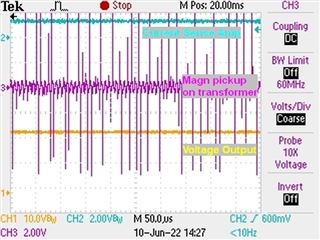
27Vout with ~4A load (working stable)
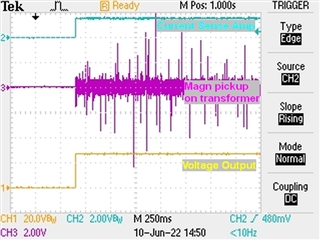
28Vout with ~4A load, pickup on transformer (fails to start up)
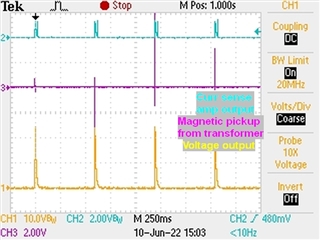
29Vout, without load, pickup on transformer (fails to start up)

Detailed view: 29Vout, with 4A load, pickup on transformer (fails to start up), the glitch can be ignored.
